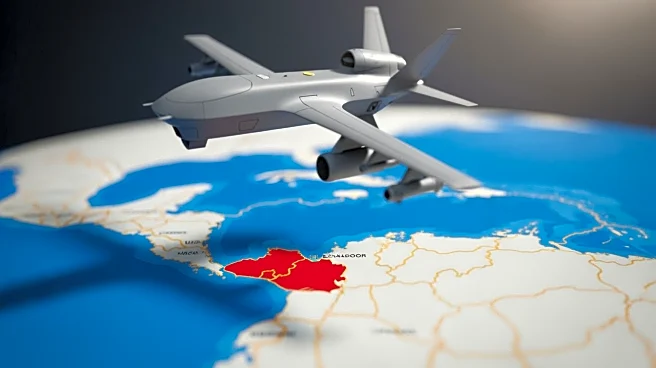What's Happening?
The United States has increased its military presence in El Salvador by deploying at least three military aircraft, including a heavily armed attack plane, to conduct missions from the country's main international
airport. This move is part of a broader U.S. troop buildup in the Caribbean region. The deployment was identified through satellite images, air traffic control communications, and flight tracking data. This expansion comes amid heightened regional tensions and is seen as a strategic move to bolster U.S. military capabilities in the area.
Why It's Important?
The deployment of U.S. military aircraft to El Salvador signifies a significant escalation in the U.S. military's regional presence, potentially impacting geopolitical dynamics in the Caribbean and Central America. This move could be interpreted as a response to increasing regional instability or as a deterrent against potential threats. The presence of U.S. military assets in El Salvador may influence diplomatic relations with neighboring countries and could lead to shifts in regional alliances. Additionally, this action underscores the U.S. commitment to maintaining a strategic military advantage in the Western Hemisphere.
What's Next?
The increased U.S. military presence in El Salvador may prompt reactions from regional governments and international bodies. Countries in the region might seek to engage in diplomatic discussions with the U.S. to understand the implications of this deployment. Additionally, there could be calls for transparency regarding the objectives and duration of the U.S. military's operations in El Salvador. Monitoring the situation will be crucial for understanding the evolving security landscape in the Caribbean and Central America.
Beyond the Headlines
The deployment of U.S. military aircraft to El Salvador raises questions about the long-term strategic goals of the U.S. in the region. It highlights the importance of military readiness and the potential for increased military cooperation or tension with regional partners. The move also reflects broader U.S. defense strategies that prioritize rapid deployment capabilities and the ability to project power in key regions around the world.













